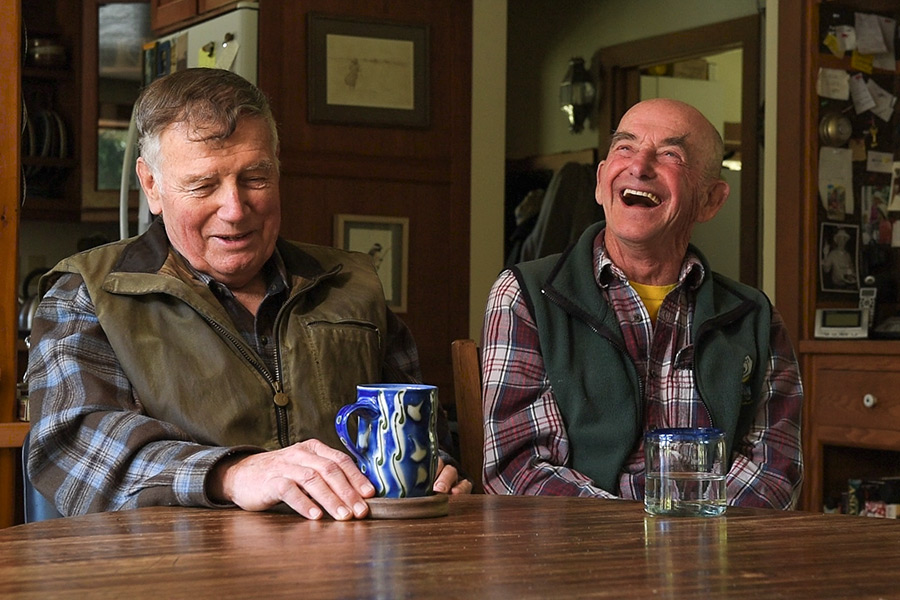What started at a kitchen table in the Blackfoot Valley four decades ago has evolved into one of the sharpest conservation tools for furnishing protections on both land and private property rights, and its narrative has emerged in the form of a new film celebrating a significant milestone.
In this narrative, Montana is the central character, and for good reason — having adopted one of the earliest statutes for conservation easements on private lands, it also stands out as one of the most successful, due in part to a few unlikely heroes.
The film, produced by Bozeman filmmaker and photographer Eric Ian and the Montana Association of Land Trusts, marks the 40th anniversary of Montana’s first conservation easement, in 1976, and the state’s ensuing legacy of private land conservation achievement that has ensued.
In four decades, Montana alone has secured more than 2.5 million acres in private land conservation, which means that landowners have willingly given up their development rights to secure, in perpetuity, land agreements that prohibit subdivisions and other large-scale development, a move that early proponents of easements recognized was crucial to maintaining the state’s wide-open spaces.
As Montana grows, nearly 1,500 acres of open land are lost to development every month, while 12 nonprofit land trusts currently serve Montana landowners and communities to preserve connected wildlife habitats and recreation areas that span private swaths of land.
But those trusts wouldn’t exist without the vision of a few intrepid landowners who viewed their own property rights as secondary to the legacy they could bestow on future generations.
Enter Land Lindbergh and Hank Goetz, the landowners who began cobbling together an idea in the early 1970s in the Blackfoot Valley that would, eventually, become the state’s first conservation easement.
With a pot of coffee and a few amenable neighbors, they hammered out what would soon become a pioneering conservation tool and one of the first legislative remedies in the country. But at the time, it was unheard of.
“We knew what we wanted to do but we didn’t know how to do it,” Lindbergh says. “We really didn’t know what a conservation easement was.”
Nobody did.
Still, in the 40 years to come, private landowners with a keen eye toward preserving their precious land and heritage, while continuing to work and ranch on it, began coming around to the notion that an easement could stave off the threat of development while allowing for a tailored suite of uses on the plots — some of it would become accessible to the public, while scores of acres would protect wildlife habitat, waterfowl migration and an unobstructed view shed.
Rather than bristle with homes and businesses, these lands would remain wide-open spaces, open to hunting and fishing, or staring down the defragmentation of habitat connectivity.
In the Flathead Valley, this piece of the puzzle has been critical to stanching development in rural landscapes extending from Flathead Lake to the Canadian border.
“In this line of work, it is all voluntary on the landowners’ side, so they deserve the credit,” said Paul Travis, executive director of the Flathead Land Trust, one of three organizations hosting the film premiere and one of Montana’s dozen trusts currently serving private landowners and the state. “It’s these landowners who should be championed for conserving their own land and building this network of conserved lands. We couldn’t do it without them, and they do it not only for the good of our land but for the good of their land.”
As a national leader in conservation, Montana’s legacy of preservation began with the nascent ideas of Lindbergh and Goetz, as well as a few neighbors who cherished their land and foresaw the impending pressures of development surrounding the Blackfoot — the blue-ribbon trout fishery now famous in part due to Norman Maclean and his classic “A River Runs Through It.”
Since then, Flathead County alone has brokered 189 easements, resulting in 42,977 acres of protected land, second in the state only to Missoula, which has 192 conservation easements protecting 59,127 acres.
Recently, the Flathead Land Trust took another step toward conserving a Flathead Valley ecological treasure with its West Valley Wetlands project, which, when completed, will conserve almost 400 acres of rich farmland northwest of Kalispell.
But what does a conservation easement mean? And why is it important to Montana?
The new film, “On the Shoulders of Giants: The Story of Montana Private Land Conservation,” will answer those questions, as will the many advocates on hand at the March 11 screening in Whitefish.
The event is free and open to the public with doors opening at 5:30 p.m. and the program starting at 6 p.m. Great Northern Brewing Company will serve beer and wine. The O’Shaughnessy Center is located at 1 Central Avenue in Whitefish.
Flathead Land Trust, Montana Land Reliance and the Vital Ground Foundation are hosting the Northwest Montana film premiere.
